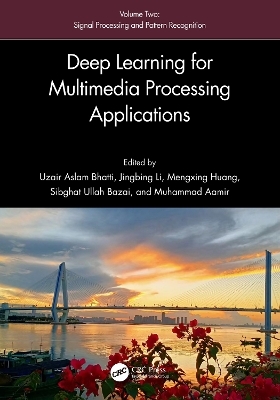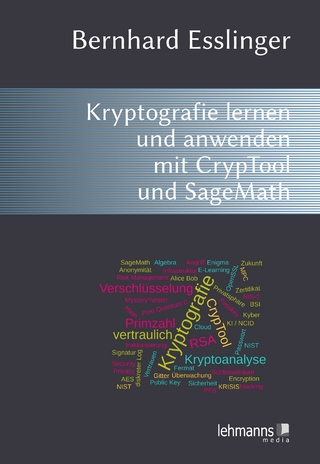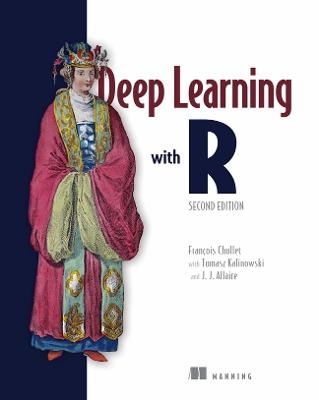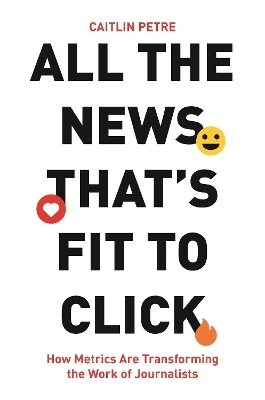
Deep Learning for Multimedia Processing Applications
CRC Press (Verlag)
978-1-032-62334-4 (ISBN)
Deep Learning for Multimedia Processing Applications is a comprehensive guide that explores the revolutionary impact of deep learning techniques in the field of multimedia processing. Written for a wide range of readers, from students to professionals, this book offers a concise and accessible overview of the application of deep learning in various multimedia domains, including image processing, video analysis, audio recognition, and natural language processing.
Divided into two volumes, Volume Two delves into advanced topics such as convolutional neural networks (CNNs), recurrent neural networks (RNNs), and generative adversarial networks (GANs), explaining their unique capabilities in multimedia tasks. Readers will discover how deep learning techniques enable accurate and efficient image recognition, object detection, semantic segmentation, and image synthesis. The book also covers video analysis techniques, including action recognition, video captioning, and video generation, highlighting the role of deep learning in extracting meaningful information from videos.
Furthermore, the book explores audio processing tasks such as speech recognition, music classification, and sound event detection using deep learning models. It demonstrates how deep learning algorithms can effectively process audio data, opening up new possibilities in multimedia applications. Lastly, the book explores the integration of deep learning with natural language processing techniques, enabling systems to understand, generate, and interpret textual information in multimedia contexts.
Throughout the book, practical examples, code snippets, and real-world case studies are provided to help readers gain hands-on experience in implementing deep learning solutions for multimedia processing. Deep Learning for Multimedia Processing Applications is an essential resource for anyone interested in harnessing the power of deep learning to unlock the vast potential of multimedia data.
Uzair Aslam Bhatti was born in 1986. He received a PhD degree in information and communication engineering from Hainan University, Haikou, Hainan, in 2019. He completed his postdoctoral from Nanjing Normal University, Nanjing, China, in implementing Clifford algebra algorithms in analyzing the geospatial data using artificial intelligence (AI). He is currently working as an associate professor in the School of Information and Communication Engineering at Hainan University. His areas of specialty include AI, machine learning, and image processing. He is serving as a guest editor of various journals including Frontier in Plant Science, Frontier in Environmental Science, Computer Materials and Continua, Plos One, IEEE Access, etc., and has reviewed many IEEE Transactions and Elsevier journals. Jingbing Li is a doctor, professor, doctoral supervisor, and the vice president of the Hainan Provincial Invention Association. He has been awarded honorary titles of Leading Talents in Hainan Province, Famous Teaching Teachers in Hainan Province, Outstanding Young and Middle-aged Backbone Teachers in Hainan Province, and Excellent Teachers in Baosteel. He has also won the second prize of the Hainan Provincial Science and Technology Progress Award three times (the first completer twice, the second completer once). He has obtained 13 authorized national invention patents, published 5 monographs, such as medical image digital watermarking, and published more than 80 SCI/EI retrieved academic papers (including 22 SCI retrieved papers) as the first author or corresponding author. He has presided over two projects of the National Natural Science Foundation of China and five projects of Hainan Province’s key research and development projects and Hainan Province’s international scientific and technological cooperation projects. Dr. Mengxing Huang is the dean of the School of Information at Hainan University. He has occupied many roles, such as the leader of the talent team of "Smart Service", the chief scientist of the National Key R&D Program, a member of the Expert Committee of Artificial Intelligence and Blockchain of the Science and Technology Committee of the Ministry of Education, the executive director of the Postgraduate Education Branch of the China Electronics Education Society, and the Computer Professional Teaching Committee of the Ministry of Education, among others. His main research areas include big data and intelligent information processing, multi-source information perception and fusion, artificial intelligence and intelligent services, etc. In recent years, he has published more than 230 academic papers as the first author and corresponding author, obtained 36 invention patents authorized by the state and 96 software copyrights, published 4 monographs, and translated 2 books. He won first prize and second prize of the Hainan Provincial Science and Technology Progress Award as the first person who completed it, and he won two Hainan Provincial Excellent Teaching Achievement Awards and the Excellent Teacher Award. He has presided over and undertaken more than 30 national, provincial, and ministerial-level projects, such as national key research and development plan projects, national science and technology support plans, and National Natural Science Foundation projects. Sibghat Ullah Bazai completed his undergraduate and graduate studies in computer engineering at the Balochistan University of Information Technology, Engineering, and Management Sciences (BUITEMS) in Quetta, Pakistan. He received his PhD (IT) in cybersecurity from Massey University in Auckland, New Zealand, in 2020. As part of his research, he is interested in applying cybersecurity, identifying diseases with deep learning, automating exams with natural language processing, developing local language sentiment data sets, and planning smart cities. Sibghat is a guest editor and reviewer for several journals’ special issues in MDPI, Hindawi, CMC, PlosOne, Frontier, and others. Muhammad Aamir received a bachelor of engineering degree in computer systems engineering from Mehran University of Engineering & Technology Jamshoro, Sindh, Pakistan, in 2008; a master of engineering degree in software engineering from Chongqing University, China, in 2014; and a PhD degree in computer science and technology from Sichuan University, Chengdu, China, in 2019. He is currently an associate professor at the Department of Computer, Huanggang Normal University, China. His main research interests include pattern recognition, computer vision, image processing, deep learning, and fractional calculus.
1. A Review on Comparative Study of Image-Denoising in Medical Imaging Nasir Ishfaq. 2. Remote Sensing Image Classification: A Comprehensive Review and Applications Uzair Aslam Bhatti, Jingbing Li, Saqib Ali Nawaz, Huang Mengxing, and Raza Muhammad Ahmad. 3. Deep learning framework for Face Detection and Recognition for Dark Faces using VGG19 with Variant of Histogram Equalization Kirti and Gagandeep. 4. A 3D Method for combining Geometric Verification and Volume Reconstruction in a Photo Tourism system Muhammad Sajid Khan and Andrew Ware. 5. Deep Learning Algorithms and Architectures for Multimodal Data Analysis Anwar Ali Sathio, Prof. Dr. Muhammad Malook Rind, and Dr. Abdullah Lakhan. 6. Deep Learning Algorithms - Clustering and Classifications for Multimedia Data Anwar Ali Sathio, Prof. Dr. Muhammad Malook Rind, and Dr. Abdullah Lakhan. 7. A Non-Reference Low-Light Image Enhancement Approach using Deep Convolutional Neural Networks Ziaur Rahman, Muhammad Aamir, Kanza Gulzar, Jameel Ahmed Bhutto, Muhammad Ishfaq, Zaheer Ahmed Dayo, and Khalid Hussain Mohammadani. 8. Human Pose Analysis and Gesture Recognition: Methods and Applications
Muhammad Haroon, Saud Altaf, Kanza Gulzar, and Muhammad Aamir. 9. Human Action Recognition Using ConvLSTM with Adversarial Noise and Compressive-Sensing-Based Dimensionality Reduction Concise and Informative Mohsin Raza Siyal, Mansoor Ebrahim, Dr.Nadeem Qazi, Syed Hasan Adil, and Kamran Raza. 10. Application of Machine Learning to Urban Ecology Mir Muhammad Nizamani, Ghulam Muhae-Ud-Din, Qian Zhang, Muhammad Awais, Muhammad Qayyum, Muhammad Farhan, Muhammad Jabran, and Yong Wang. 11. Application of Machine Learning in Urban Land Use Haili Zhang and Qin Zhou. 12. Application of GIS and Remote Sensing Technology in Ecosystem Services and Biodiversity Conservation Mir Muhammad Nizamani, Qian Zhang, Ghulam Muhae-Ud-Din, Muhammad Awais, Muhammad Qayyum, Muhammad Farhan, Muhammad Jabran, and Yong Wang. 13. From Data Quality to Model Performance: Navigating the Landscape of Deep Learning Model Evaluation Muhammad Akram, Wajid Hassan Moosa, and Najiba. 14. Deep Learning for the Turnover Intention of Industrial Workers: Evidence from Vietnam Nguyen Ngoc Long, Nguyen Ngoc Lam, and Bui Huy Khoi. 15. Deep Learning for Multimedia Analysis Hafiz Gulfam Ahmad Umar. 16. Challenges and Techniques to Improve Deep Detection and Recognition Methods for Text Spotting Anuj Abraham and Shitala Prasad. 17. Leaf Classification and Disease Detection Based on R-CCN Deep Learning Approach Tayyab Rehman, Muhammad Sajid Khan, and Noshina Tariq. 18. Deep Learning for Multimedia Analysis: Applications, Challenges, and Future Directions Dr. Ahmed Mateen Buttar, Muhammad Anwar Shahid, Muhammad Nouman Arshad, and Irfan Ali.
| Erscheinungsdatum | 23.02.2024 |
|---|---|
| Zusatzinfo | 30 Tables, black and white; 37 Line drawings, color; 8 Line drawings, black and white; 53 Halftones, color; 6 Halftones, black and white; 90 Illustrations, color; 14 Illustrations, black and white |
| Verlagsort | London |
| Sprache | englisch |
| Maße | 178 x 254 mm |
| Gewicht | 2590 g |
| Themenwelt | Informatik ► Theorie / Studium ► Algorithmen |
| Informatik ► Theorie / Studium ► Künstliche Intelligenz / Robotik | |
| Technik ► Umwelttechnik / Biotechnologie | |
| ISBN-10 | 1-032-62334-9 / 1032623349 |
| ISBN-13 | 978-1-032-62334-4 / 9781032623344 |
| Zustand | Neuware |
| Informationen gemäß Produktsicherheitsverordnung (GPSR) | |
| Haben Sie eine Frage zum Produkt? |
aus dem Bereich


